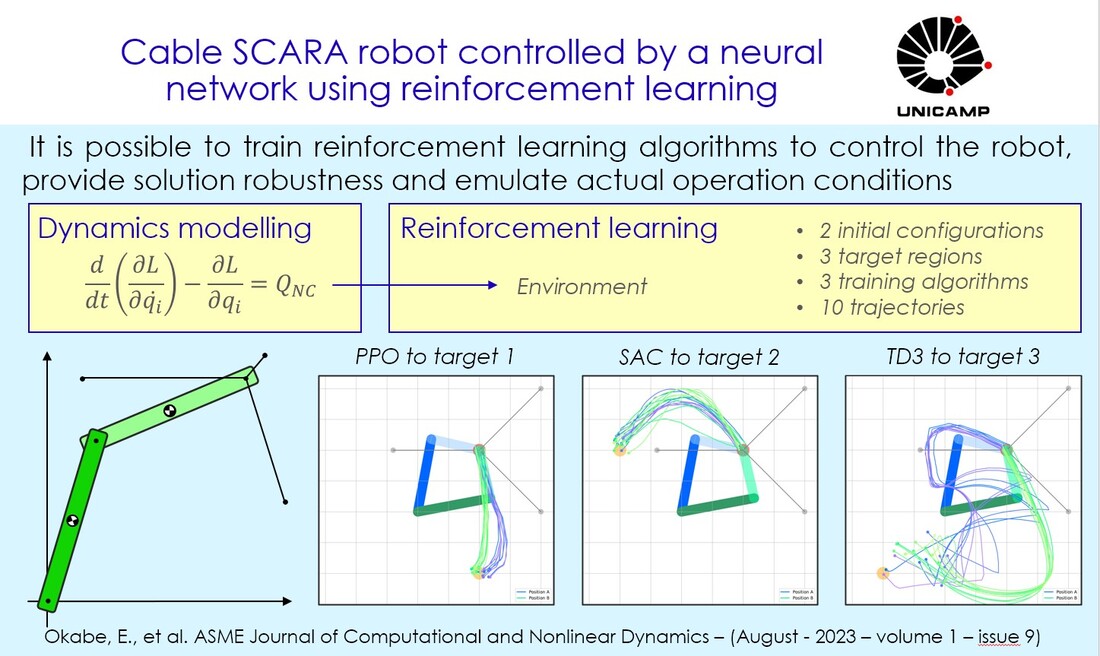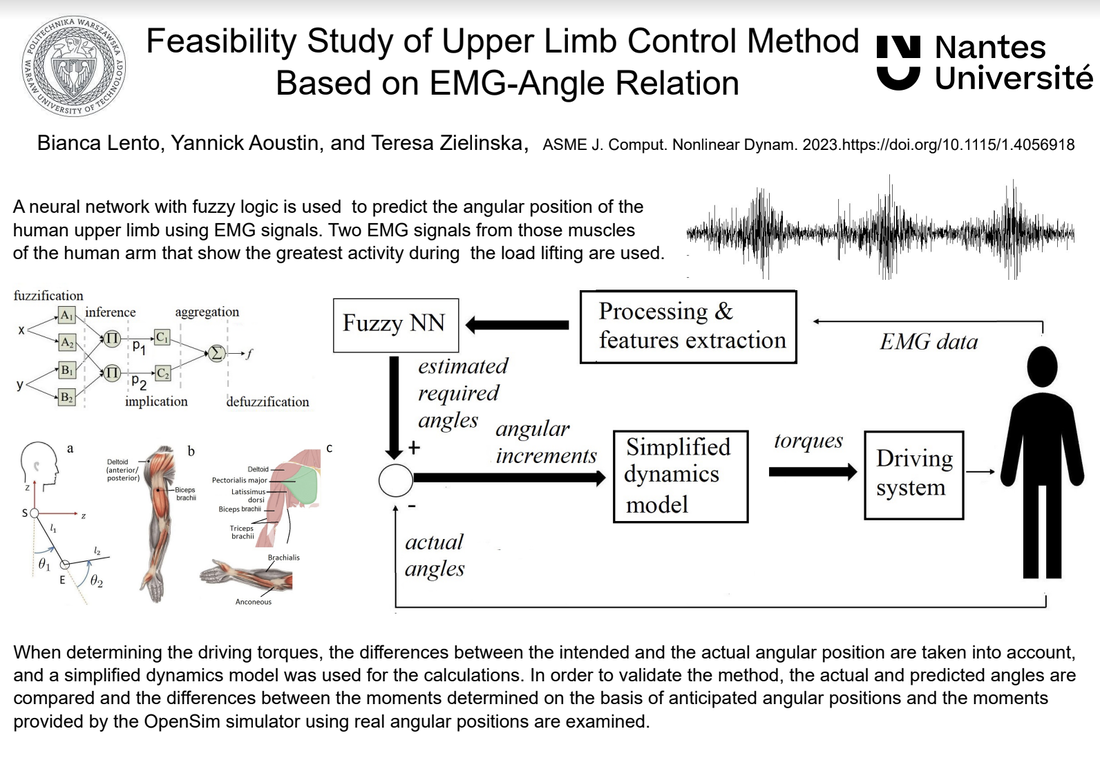Archives
February 2024
Categories
All
|
Back to Blog
Eduardo Okabe, Victor Paiva, Luis Silva-Teixeira, Jaime Izuka J. Comput. Nonlinear Dynam. Oct 2023, 18(10): 104501 https://doi.org/10.1115/1.4063222 The industry and the scientific community have shown interest in SCARA (Selective Compliance Assembly Robot Arm) robots due to their high accuracy. In this paper, a two-link SCARA has its end-effector pulled by three cables that generate a triangular-shaped workspace. Moving the end-effector in this region is a relatively straightforward task, but placing the end-effector outside it requires a nonlinear dynamic model and a state-of-the-art controller. To address this problem in a simpler, more efficient and innovative manner, the equations of motion are derived and three reinforcement learning algorithms are employed: Proximal Policy Optimization (the same used by the chatbot ChatGPT), Soft Actor-Critic and Twin Delayed Deep Deterministic Policy Gradient. Three targets outside the triangular workspace are considered and the trained networks have their results compared in terms of displacement error, velocity and standard deviation. The Twin Delayed Deep Deterministic Policy Gradient provides creative trajectories, the Soft Actor-Critic presents better solutions for two out of three targets, while the Proximal Policy Algorithm appears to be the most consistent considering all targets under analysis.
0 Comments
Read More
Back to Blog
Bianca Lento, Yannick Aoustin, and Teresa Zielinska, "Feasibility Study of Upper Limb Control Method Based on EMG-Angle Relation," ASME J. Comput. Nonlinear Dynam. Jun 2023, 18(6): 064501. https://doi.org/10.1115/1.4056918 Abstract: The method of inferring the human upper limb angles basis on EMG signals with the use of fuzzy logic neural network is discussed. The planar motion in sagittal plane is taken into account, and two EMG signals are analyzed. An artificial neural network with fuzzy logic is used to process EMG signals. The network predicts angular trajectories. On the basis of the difference between the current and the intended angular position, the driving torques are determined using simplified dynamic model. To verify the method, the real and predicted angles are compared. The difference between the torques evaluated using predicted angular trajectories and simplified dynamics, and the torques delivered by the OpenSim simulator using the true data is also studied. Obtained results confirm the correctness of the concept and its usefulness for controlling prostheses or exoskeletons.
|
 RSS Feed
RSS Feed



